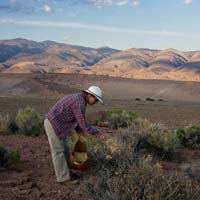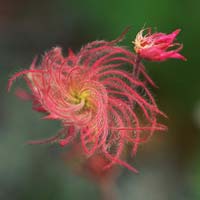The Greenbelt Native Plant Center (GNPC), a facility of the New York City Department of Parks & Recreation, is a 13–acre greenhouse, nursery, and seed bank complex located on Staten Island, NY.
Project: The Millennium Seed Bank Project
The Greenbelt Native Plant Center (GNPC) is one of the many worldwide partners working with the Royal Botanic Garden?s Millennium Seed Bank Project (MSBP).

MSBP is a global effort undertaken by the Royal Botanic Garden (RBG) at Kew, United Kingdom to collect seed from 10% of the world's flora by the year 2010 for long–term storage under conditions that will maintain seed viability in most instances for millennia.
This ex–situ or "Noah's Ark" approach to conserving the world's flora is intended to compliment local on–the–ground, in–situ, plant conservation efforts.
The MSBP has sought local partners around the world to meet this goal.
The Greenbelt Native Plant Center, along with the Brooklyn Botanic Garden/New York Metro Flora Project team, was invited by the RBG to join as a local partner in collecting for the project. The GNPC/BBG effort is distinguished by being the only urban partner of the Millennium Seed Bank Project.
Our agreement with RBG/MSBP is to collect 75 locally important and declining species from the greater NYC area. These species are collected from wild populations within the five boroughs and from neighboring counties.
Partners
- Royal Botanic Garden at Kew, United Kingdom/Millennium Seed Bank Project
-
US Bureau of Land Management/Seeds of Success(BLM/SOS)
- 18 US partners, including the Greenbelt Native Plant Center
- Plant Conservation Alliance (PCA)
Participating Countries
Australia, Botswana, Burkina Faso, Chile, China, Europe, Jordan, Kenya, Lebanon, Madagascar, Malawi, Mali, Mexico, Namibia, Republic of South Africa, Tanzania, USA, United Kingdom
Duration
2004–2010
Rationale
A coordinated global seed conservation network capable of safeguarding wild plant species, which will make direct contributions to national and global conservation/development programs, is essential. This collaboration effort will make a significant contribution toward meeting the objectives of the Convention of Biological Diversity.
MSBP partnerships include components such as research, training, and other capacity–building elements, as well as focusing on seed collection. Partnerships are helping each country to implement international objectives such as the Global Strategy for Plant Conservation.
Goal
By 2010, MSBP partners will have banked seed from 10% of the world's wild plant species—many of which are the rarest, most threatened, and often the most useful species.
Seed collections will be kept in the country of origin, in partner seed banks, and in the Millennium Seed Bank in the UK.
Objectives

- To collect seeds, herbarium specimens, and data from 24,200 species worldwide and to conserve these collections to international standards, both at the MSB and in each country of origin
- To establish and develop partnerships to meet these conservation objectives
- To make seeds available for conservation in the wild and for research
- To carry out research to improve all aspects of seed conservation
- To facilitate access to information and transfer of the best practice in seed banking to all project partners and the wider scientific community
- To increase public awareness of the need for plant conservation
Activities
- GNPC received a week of training in seed banking science, technology, and practices at the MSBP facility in England.
-
The seed banking facilities at the GNPC were brought up to international seed banking standards with funds provided by RBG/MSBP.
- With the new seed storage facility, GNPC is established as a Regional Active Seed Bank–a seed repository for restoration and management projects throughout the region.
- GNPC and BBG scientists selected 75 target species for collection, using current and historical plant location data from BBG's Metro Flora Project and field scouting.
-
Species were selected from plant communities that included regionally rare plant associations, or from plant communities that are contracting their range largely due to urban/suburban development and the encroachment of non–native invasive species in the NYC area.
-
Selected plant communities include:
- Oak–Tulip Tree Forest
- Red Maple–Black Gum Swamp
- Red Cedar Rocky Summit
- Rocky Summit Grasslands
- Maritime Heathland
- Maritime Post Oak Forest
- Maritime Freshwater Interdunal Swales
- Dwarf Pine Plains
-
Selected plant communities include: